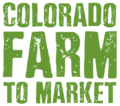Why Bother to Buy and Sell Local?
- Customers are willing to pay more for a premium product, giving a competitive advantage over conventional methods of marketing.
- Producing food locally reduces the need for transportation and fuel, therefore benefiting the environment.
- Buying and selling locally supports families and farms within the community while strengthening the local economy.
- Food may be of better quality and more nutritious than produce that must travel a long way from the field.
- Knowing where your food comes from and knowing who produced it enhances food security.
Steps to Selling Local Produce
Start in the field. Good agricultural practices are essential to providing safe, quality food directly to customers. Only use safe irrigation sources and routinely have the water tested. Access to fields should be restricted to only those who have been educated on proper worker hygiene.
- Post-Harvest Handling. Proper storage, temperature maintenance, and handling will ensure your product arrives at the market or in the hands of the customer as fresh as possible. Salad greens and perishable foods such as cheeses should be placed on ice. Gloves or tongs should be used for proper handling of unwrapped foods such as salad greens or baked items. Fresh roasted peppers should not be left at room temperature for more than 2 hours.
- Display your qualifications. Be sure to ensure your customers that you have taken extra precautions to make their food safe. Certifications, audits, and other types of verifications of safe production should be displayed proudly.
- Establish relationships. Get to know your customers’ needs and expectations. Specific methods for harvesting, washing, or handling may be requested. If distributing to a restaurant or food services, time harvests to be able to provide the freshest produce to your customers.
- Provide information. Alert your customers of any extra care that the produce may require after purchasing such as washing, refrigeration, or cooking temperatures to reduce the chance of foodborne illness. Including the time of harvest may also help consumers gauge ripeness and expected length of shelf life.
- Be prepared. Know what products will be sold and what extra materials they may require. If produce requires cool temperatures for storage, be sure to provide clean containers and ice for vending.
Steps to Buying Local Produce
Evaluate possible sources. Inquire about local sources, their agricultural practices, products they can provide, and steps towards food safety.
- Establish a relationship. Choose a producer that you trust and feel comfortable providing food for your customers.
- Convey your expectations. Be clear about agricultural and proper handling practices you would prefer prior to harvest. Specify desired characteristics such as size, quality, quantity, ripeness, and packaging materials.
- Practice proper handling. Discuss with your grower any further steps that may be required such as washing or refrigeration after purchase.
For consumer information about farmers’ markets see Shopping at Colorado Farmers’ Markets.
Related Links:
References:
- Gretchen Wall, MS Student, Marisa Bunning, PhD, Department of Food Science and Human Nutrition, Colorado State University Extension.
